St Pierre has seen a lot of change in recent years. The business was acquired by international bakery giant Grupo Bimbo in October 2022, which made David Wagstaff managing director shortly after. Now, Sarah Boddy has stepped into the top job as Wagstaff looks to pastures new.
British Baker caught up with David Wagstaff prior to his exit to find out what the future had in store for St Pierre as part of Grupo Bimbo.
“Jeremy and Paul recognised that they had probably taken the business as far as it could go without investment. That’s investment across different areas – it’s marketing, resource, infrastructure. So, Grupo Bimbo buying us opens up, unlocks, and solve some of those challenges,” Wagstaff explains.

St Pierre Groupe is a “little bit of an oddity” for its new owners because it doesn’t have manufacturing, instead working with manufacturing partners on the continent. There are pros and cons to this, according to Wagstaff but ultimately it is beneficial for the business. “We don’t have to worry about running factories,” he says, “so we have the luxury of focusing on the nice stuff – branding, creating new products, working with customers, developing categories and so on.”
As such, it is “business as usual” for St Pierre under Grupo Bimbo but with the added advantage of its parent company’s reach. This can also help St Pierre on its trajectory to becoming a “billion-dollar brand”. It’s a big number, but one that is backed by research, Wagstaff assures.
“We can get there through the superpower that is Bimbo,” he adds, highlighting his ambition to be halfway there in the next three to five years. “They’re a global business so they can give us a footprint in several markets, and we can supply the brand to markets that we previously couldn’t get to and trade in channels and on delivery routes that we previously couldn’t reach.”
So, what does this journey to a billion-dollar brand look like? And where is St Pierre now?
Global sales for 2022 (the latest available) just surpassed £150m ($190m) – a 35% increase from the 2021 figures. While Europe saw a marginal increase, the biggest gains for the business were recorded across the rest of the world, which accounted for £81m. This also signified a shift to the US as St Pierre’s biggest market, aided by its launch in Walmart stores last year.

There’s plenty more growth where that came from and Wagstaff is optimistic about the opportunities ahead. “There are so many retailers in the US,” he explains. “It’s unlike the UK, where if you’re not in Tesco, you’re excluded from 30% of the market. In America, you can be in your half of the retailers and still have a huge business.”
Expansion into Europe is also on the cards under the new owner, Wagstaff adds, so expect to see the bright orange brand cropping up on the continent as well.
Authenticity matters
While markets may expand, one thing Wagstaff insists will stay the same is the quality and authenticity of St Pierre’s products. The majority of the firm’s products are made by a manufacturing partner in France, particularly apt given the heritage of the product and the fact that branding features the Eiffel Tower. For added authenticity, St Pierre’s waffles are made in Belgium.
“Authenticity is very important,” Wagstaff states. “It gives us credibility and adds significant value to the product – it’s critical for the brand. We’ve toyed with the obvious thing of should we make products in America for our American business? And we decided no, we’ll lose our authenticity, we’ll just become another burger bun and that’s not what we want to do.”
Another way St Pierre is justifying its premium is by “bringing some theatre to stores” as Wagstaff believes food retailing this side of the pond has become “quite vanilla” in the last 10 years. In comparison, there are smaller retailers in the US which he describes as “like going to an emporium”.
“[Retailers] have lost the art of making shoppers excited when they walk into the store because they’ve been so obsessed with chasing the discounters on price and everything else,” he says. “It’s not good for NPD, it’s not good for innovation, and it just stalls potential category growth.”
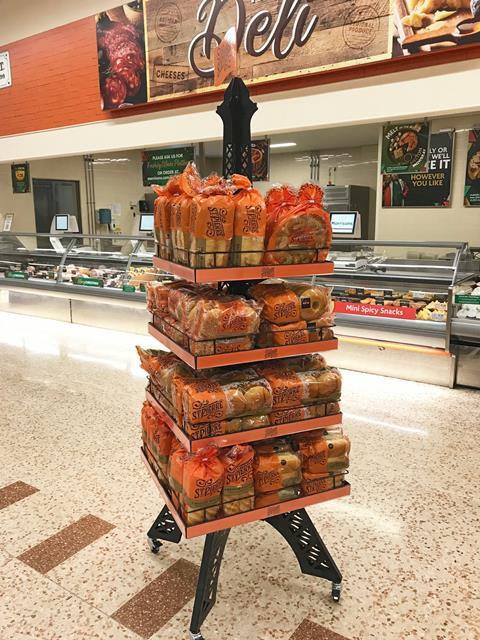
The former MD cites the St Pierre Eiffel Tower displays, found in Asda and Morrisons, as one way the brand is instilling excitement for shoppers. It’s a tactic the business found success with in the US before bringing it to UK shores. It drives awareness and recognition, a key point of its growth strategy.
Creating a successful brand is about believing in your product and not faltering on price, Wagstaff expresses. “It’s having that confidence to sell it for £3 or £4 a pack and not thinking it’s too expensive because Aldi have buns for £1.99.”
Another prong to the growth strategy is capturing meal occasions “from dawn to dusk”, either through existing products or new ones. It’s already in operation in the US as part of trials with Walmart, which sees St Pierre products listed in in-store bakery, the ‘commercial bread aisle’, and the breakfast segment with items such as waffles and crêpes.
Foodservice provides a further opportunity but the lack of branding in this market is a challenge that needs to be overcome. One consideration is to develop showcase foodservice outlets, which use St Pierre products (and proudly shout about that fact) allowing the brand to access shoppers in the market and drive brand loyalty and sales in the grocery sector.
Addressing how to play better in convenience is another opportunity that needs to be explored. At present, St Pierre’s products are distributed to the convenience channel via wholesalers including Booker. It’s a market where the business’ other brands, Paul Hollywood and Baker Street, really come into their own partly due to their extended shelf life. With the St Pierre brand expanding rapidly in the US, Wagstaff affirms these two will remain on UK shores only.
“St Pierre is very much the focus, that’s where the value is for us as a business,” he says, “but Baker Street and Paul Hollywood will still have a role to play.”
Fresh new products
The same will likely be true when it comes to new product development, although Wagstaff admits to having some frustration with the UK market on this.
“Sometimes I feel customers are a little self-limiting on what they’ll try and that’s a frustration for us (and probably for some of our competitors as well). We’ve got all these great ideas and know we could develop the category in bakery,” he explains.
That’s not to say he wants the brand to roll out some off-the-wall products, more “an extension of things that are doing well”. Individually wrapped Belgian Waffles with Butter and Belgian Waffles with Chocolate Chips are one example of the exciting NPD rolled out in orange jackets recently.

“We have to be quite ruthless on new product development because the team came up with so many fantastic ideas,” he notes, “it’s quite a luxurious place to be.”
The products that do make it through to launch are privy to an experiential launch process as Wagstaff explains that prospective buyers are given the “St Pierre experience” with the items served up in a myriad of ways to drive inspiration and conversation. “It starts discussions about ‘how do you take that into store’ rather than ‘what’s my price?’” he says.
It’s a premium experience more people are trying to get in on. And while St Pierre has huge plans, it won’t be diluting its premium value any time soon as affirmed by new managing director Sarah Boddy.
“It’s a fantastically exciting time for the business, our brands and our team and I’m looking forward to leading the company on as we continue to grow our share in new and existing markets as a premium, authentic brioche brand,” Boddy says.
“We will continue to excel in bakery, leading the category and disrupting traditional retail models and merchandising to win big across the UK, North America and new markets on the horizon.”



















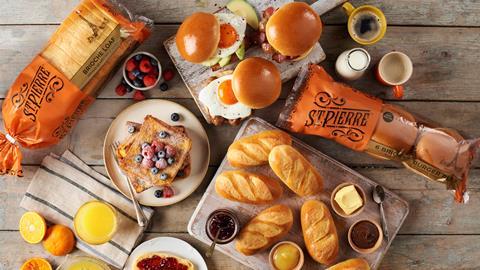
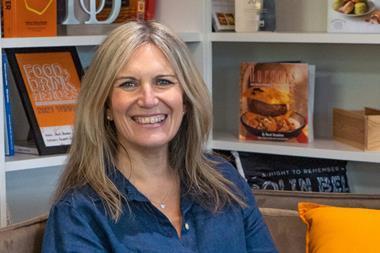

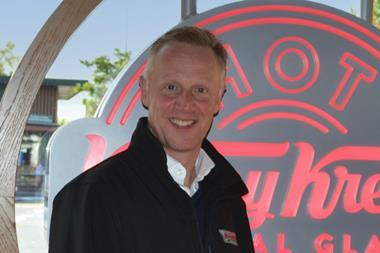
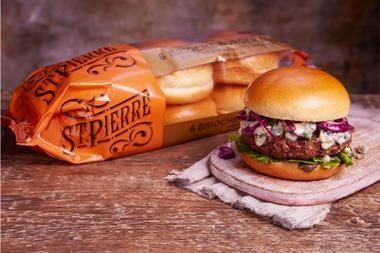
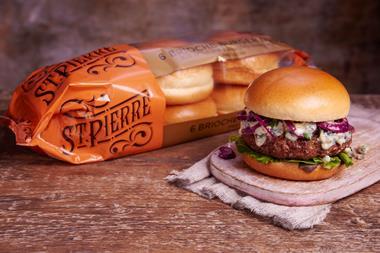
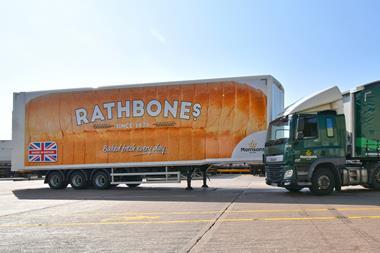

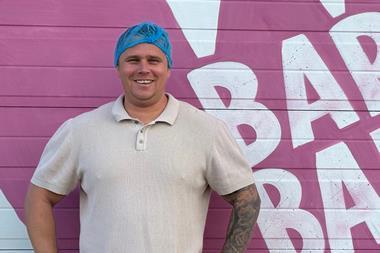
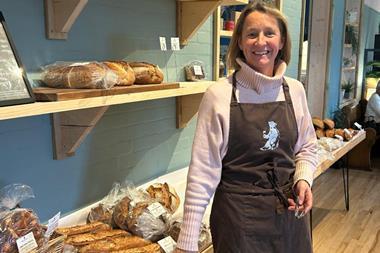

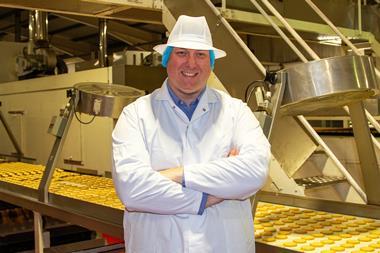
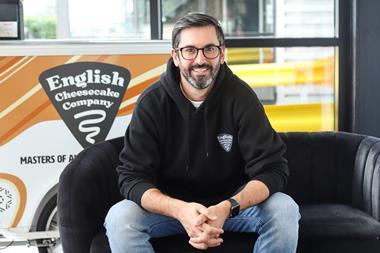

No comments yet